Search
Remove Ads
Advertisement
Summary 
Loading AI-generated summary based on World History Encyclopedia articles ...
Search Results
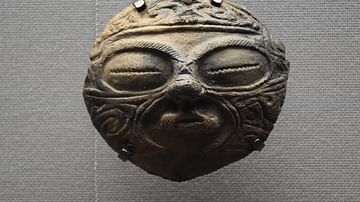
Definition
Jomon Period
The Jomon Period is the earliest historical era of Japanese history which began around 14500 BCE, coinciding with the Neolithic Period in Europe and Asia, and ended around 300 BCE when the Yayoi Period began. The name Jomon, meaning 'cord...
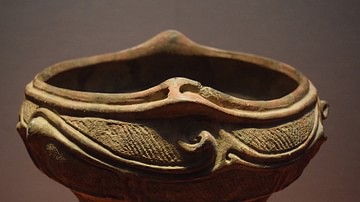
Definition
Jomon Pottery
The Jomon Period (c. 14,500 - c. 300 BCE) of ancient Japan produced a distinctive pottery which distinguishes it from the earlier Paleolithic Age. Jomon pottery vessels are the oldest in the world and their impressed decoration, which resembles...
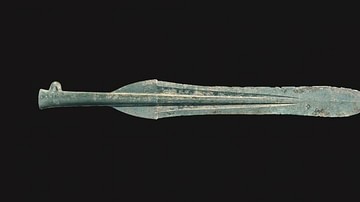
Definition
Yayoi Period
The Yayoi Period is one of the oldest historical periods of Japan spanning from c. 300 BCE to c. 250 CE, preceded by the Jomon Period and followed by the Kofun Period. The name Yayoi comes from the district in Tokyo where the first artifacts...
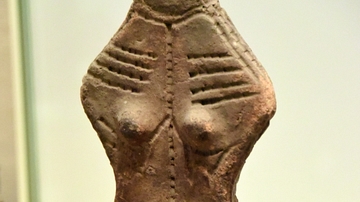
Image
Jomon Period Dogu
This is a headless dogu. Earthenware figures (dogu) were important in the Jomon period and as many as 1000 have been found at some sites. Some seem to represent imaginary animals but most are human in shape. Are they females, or without a...
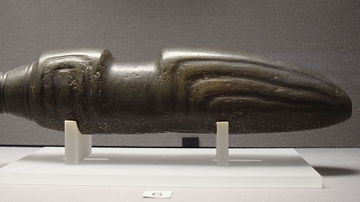
Image
Jomon Period Stone Ritual Object
This stone ritual object comes from Japan and dates to the Jomon period, between 3000-400 BCE. (Tokyo National Museum)

Definition
Ancient Japan
Ancient Japan has made unique contributions to world culture which include the Shinto religion and its architecture, distinctive art objects such as haniwa figurines, the oldest pottery vessels in the world, the largest wooden buildings anywhere...
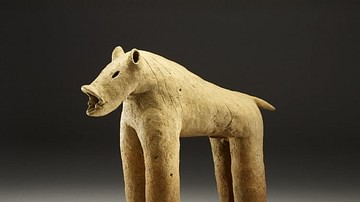
Definition
Kofun Period
Following the Yayoi Period of Japan when farming and metalworking techniques were introduced from mainland Asia was the Kofun Period (c. 250 CE - 538 CE) where the religion of Shinto emerges from the beliefs of previous eras and the Yamato...
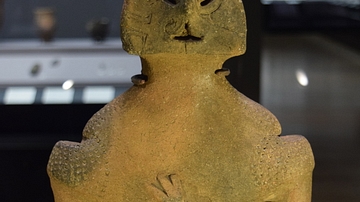
Image
Dogu Figurine, Jomon Period
A clay dogu figurine. From Kamikurokoma, Fuefuki-shi, Yamanashi, Japan. Jomon Period, 3000-2000 BCE. (Tokyo National Museum)

Video
The Japanese Jomon Period
This video describes the historical developments of the Japanese Jomon Period.
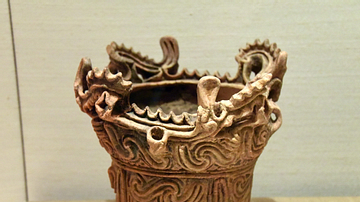
Image
Jomon Flame Pot from Dodaira
"Flame" pots, such as this, are just one type of a long ceramic tradition that continued for some 13,000 years during the Jomon period in Japan. They were made in the Middle Jomon period (3500-2500 BCE) in the area that is now modern Niigata...